One day, we took the train from Waterloo Station to Winchester where Christopher Wallace met us and drove us the short distance to the Green Jackets Museum. Christopher
is the official historian of the Kings Royal Rifle Corps (also known as the 60th Rifles and the Green Jackets). For the last four years, he’s been a huge help to me as I’ve been researching both my father’s and my uncle’s experiences in the Regiment during the Second World War. We were delighted finally to meet one another.
My uncle, Ian Barnard Hankey, was a likely candidate for the Regiment as he was an English public schoolboy who turned 18
in November of 1939. Unbeknownst to his parents, he enlisted in January of 1940 while passing through Birmingham on his way from a Christmas holiday with his family in Kent to his school, Ampleforth College, in Yorkshire.
My father was a different story. An American citizen, he was repeatedly rejected by his own country’s armed services because he was prone to white coat syndrome. Every time he got near an examining physician, his blood pressure shot up. No matter what strings he pulled, (and since his mother was Eleanor Roosevelt’s first cousin, he pulled some pretty big ones) the army kept thanking him for his offer of service and talking about a desk job. He’d just about given up the idea of joining the fight when he heard about the KRRC recruitment officer in New York.
The KRRC was actually “raised” in America in response to the disastrous defeat of General Braddock’s troops at the hands of the French and Indians on July 8, 1755. Recruited from settlers in Massachusetts, New York, Pennsylvania, Maryland and North Carolina and supplemented by volunteers from British and European regiments, the 60th Royal Americans, as they came to be called, were vital to the British cause during the War for Independence. They earned their motto, “Celer et Audax” (Swift and Bold) because they’d adopted “the colonial methods of equipment, simpler drill, open formations, and the Indian system of forest warfare.” * So, in view of the Regiment’s American origins, the KRRC in 1941 decided to commission a select group of volunteers “from the States”. The earliest recruits joined the British Army before Pearl Harbor. By April, 1942, my father had been accepted into the regiment and was training in Winchester where the Green Jackets museum is now located.
Christopher gave us a wonderfully detailed tour of the museum so that we could see everything from an officer’s uniform
during the War for Independence right through to the official notice of the Americans who stood with the British in World War II.
taken in North Africa in August, 1943, Stewart, my father, stands second from the left. After a long, dusty trip through North Africa, these five Americans ship out with the 8th Army to fight in Italy. They don’t see England again until March of 1944.
My father never met my uncle Ian, the fellow member of the regiment and the man who would have been his brother-in-law. On August 31, 1942, the day my parents met in Yorkshire, my uncle Ian, a 20-year-old platoon officer, was killed in the battle of Alam El Halfa in the Western Desert.
Stewart doesn’t finish the war with the KRRC. In July, 1944, the American Army finally approves his transfer just before he parachutes into France with the Office of Strategic Services (OSS) as the leader of a three man team sent to fight with the French Resistance. Because the transfer comes so late, he is forced to borrow a uniform from his younger brother, John, (also in England training as a parachutist) and to ask Dick Franklin, the young radio operator on his team, to affix his First Lieutenant bars and crossed rifles in their proper place on his left shoulder. Franklin shows him the American form of salute and reminds him not to stamp his feet as is the custom in the British army. Just before he jumps, Stewart is promoted from 1st Lieutenant to Captain.
In the space of four weeks, my father switched armies, was promoted and….
On June 20, 1944, he and my mother are wed in the side altar
two hours after a V-1 rocket attack.
Some weeks later, he is crouched in a ditch by the side of a road in the Haute-Vienne section of France while his bride is back at work, decoding agents’ reports, alert to the whine of approaching “doodle bugs” in the skies above London.
What a way to start a marriage.
*From the Regimental Association History Site
Next entry


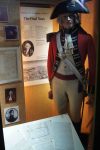

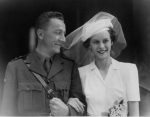
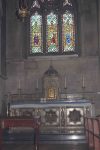
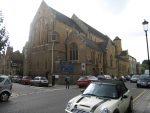

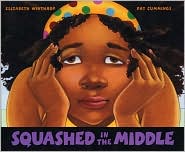
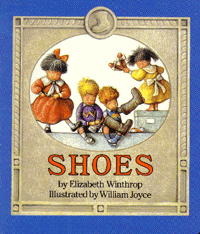

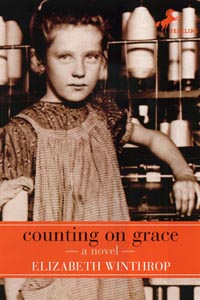
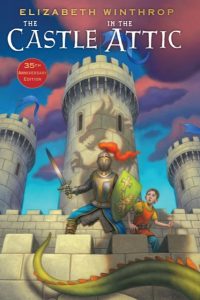
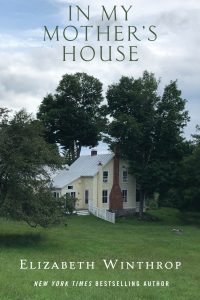
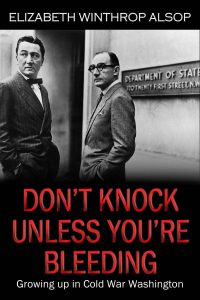
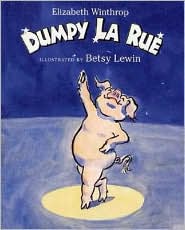
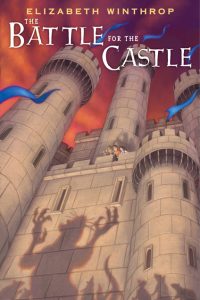
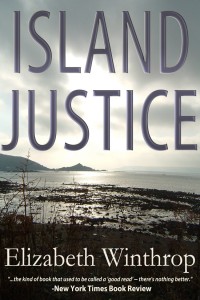

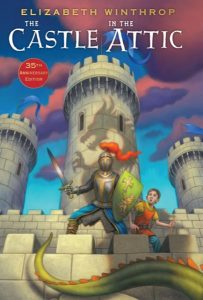

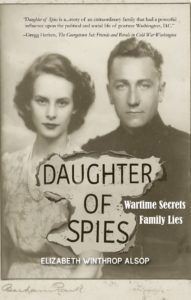
As Nicholas and Lisa Alsop are my neighbors, I found it enlightening to learn a little about the history of the family. Thanks so much for sharing!
Lisa Alsop is my twin sister. While I have heard parts of the story previously, I had never known the details that you shared here. How interesting and amazing it is to think what they lived through and so many today complain when their cable goes out for the afternoon due to the rain.
Thanks for sharing your family’s story as it relates to all of our history.
Lynn, thanks so much for your response to this story. So glad you have found it interesting.
Elizabeth